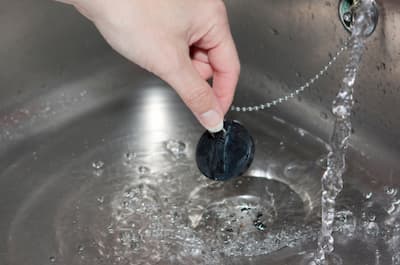
Most homeowners never think twice about where their wastewater goes until there’s a problem. You brush your teeth, rinse a dish, or step out of the shower, and with a quick swirl, it’s all gone. But what really happens after the water disappears down the drain?
Let’s take a behind-the-scenes journey through your home’s plumbing system—and reveal what’s actually happening every time you pull the plug.
From Sink to Sewer: The Journey Begins
Once water enters your drain, it travels through a maze of pipes that snake through your walls and beneath your home. Along for the ride? Soap scum, toothpaste, bits of food, hair, grease, and whatever else you’ve just washed away.
At first, this waste flows easily through the system. But over time, those sticky particles begin to cling to the inside of your pipes, slowly building up layer by layer. In places with low water pressure or aging pipes, this buildup can happen even faster—especially in bends or joints where debris tends to settle.
The Gunk That Lurks Below
Picture the inside of your drainpipes as arteries. Just like cholesterol can clog a bloodstream, fats, oils, and grime can choke off the flow of wastewater. In kitchens, grease is a top offender. In bathrooms, it’s usually a cocktail of hair, soap, and skin oils.
These slow-growing clogs don’t always cause immediate blockages. Instead, they restrict flow bit by bit until you notice signs like gurgling drains, standing water, or unpleasant odors. That’s when many homeowners call a Longmont plumber—but by then, the clog may already be deep in the system.
Deep Trouble: When the Problem Isn’t Just in the Sink
Some clogs form far beyond where your plunger or store-bought snake can reach. Tree roots, collapsed lines, or years of buildup can create blockages in your main sewer line. This is where professional drain cleaning makes all the difference.
Plumbers use high-powered tools like video inspection cameras to pinpoint the clog’s exact location. From there, hydro jetting (a method that blasts clogs with pressurized water) or mechanical augers are used to break through and clear the line. These advanced techniques don’t just remove the blockage—they clean the entire pipe, helping to prevent future problems.
Why Maintenance Matters
Understanding what happens inside your drains highlights the importance of preventive care. Regular drain cleaning can keep your system running smoothly, eliminate odors, and prevent costly emergencies.
Next time you pull the plug, remember the unseen journey taking place beneath your home. If your drains are acting up—or if you want to keep them in top shape—trust a Longmont plumber to help you stay ahead of the problem.
Call B-Line Plumbing & Drains today for professional drain cleaning in Longmont and keep your plumbing system flowing freely!

